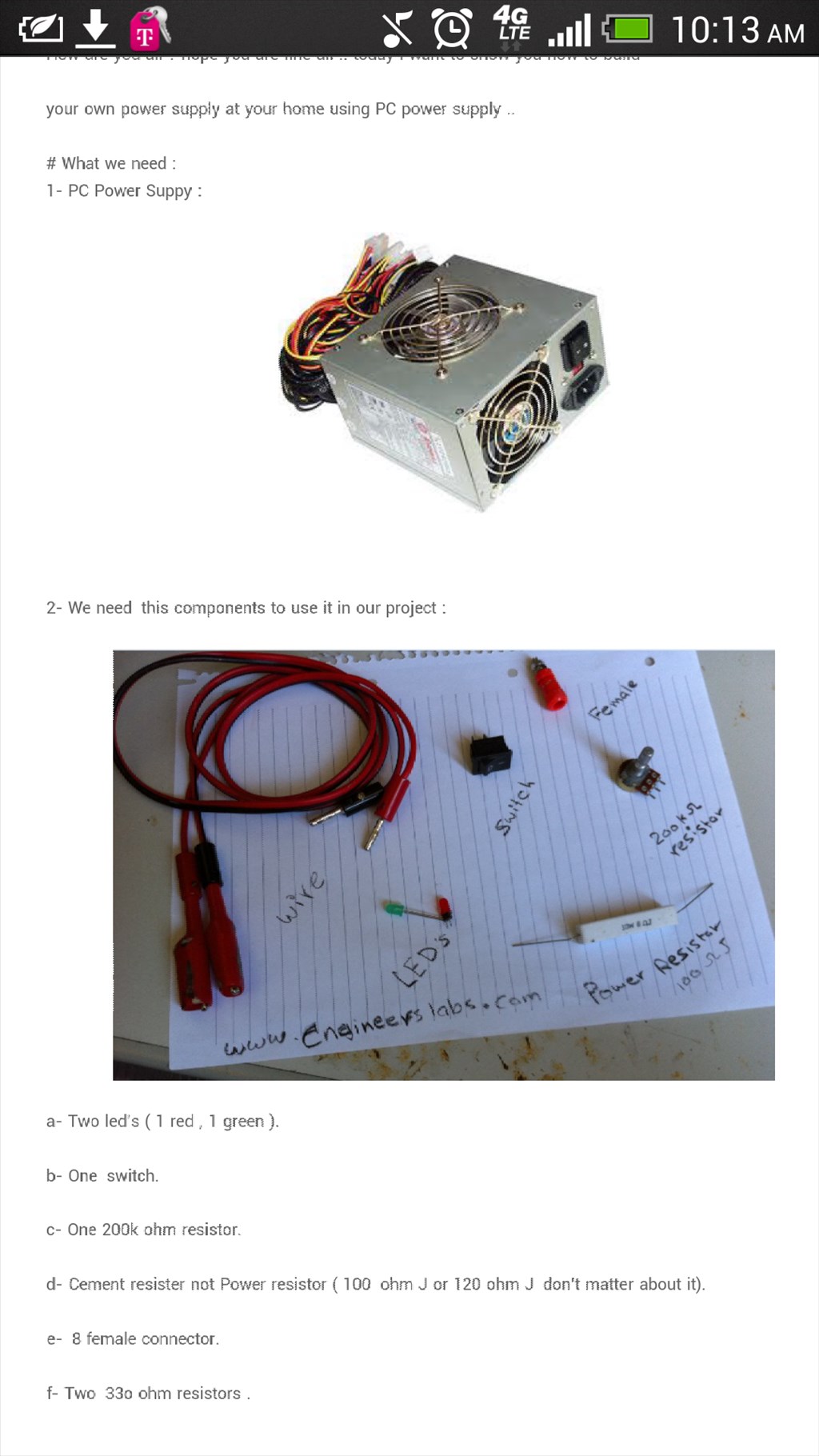jstarne1
USA
Asked
— Edited
Hello guys this is a improment over the past tutorial posted for converting a PC power supply to be a bench 12 volt supply. This tutorial uses the same computer PSU to make a adjustable 0 to 24 volts. This means testing equipment of different voltages will be much easier. Now you don't need to hunt down a ad adapter and cut it up only to find it's not really the voltage you needed.


hmm.... Interesting. GREAT Tutorial!
you could place a small voltmeter in PAR and an ampmeter in series and watch the voltage or the amps as you adjust the pot.
https://www.youtube.com/watch?v=OJX4h80uw88#t=120
Here is the YouTube video for the author. Hopefully you found this useful I plan to make one of these myself as it would be very useful.